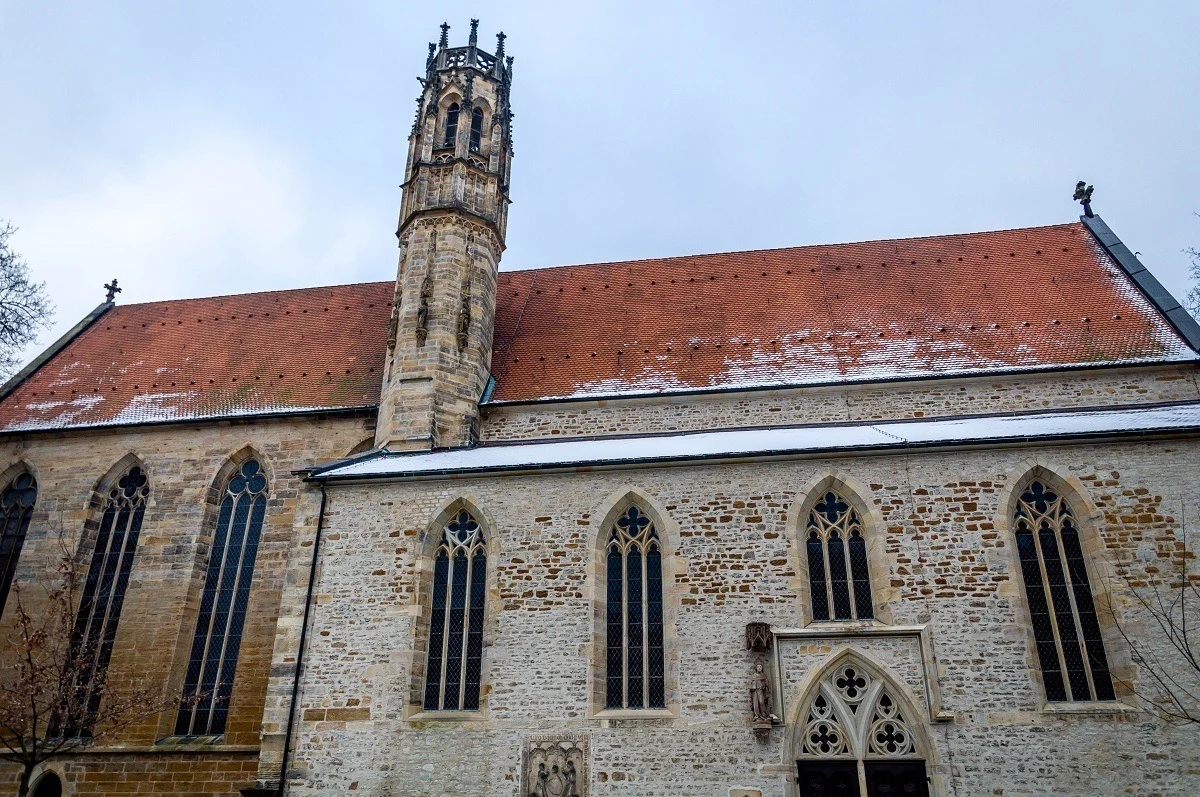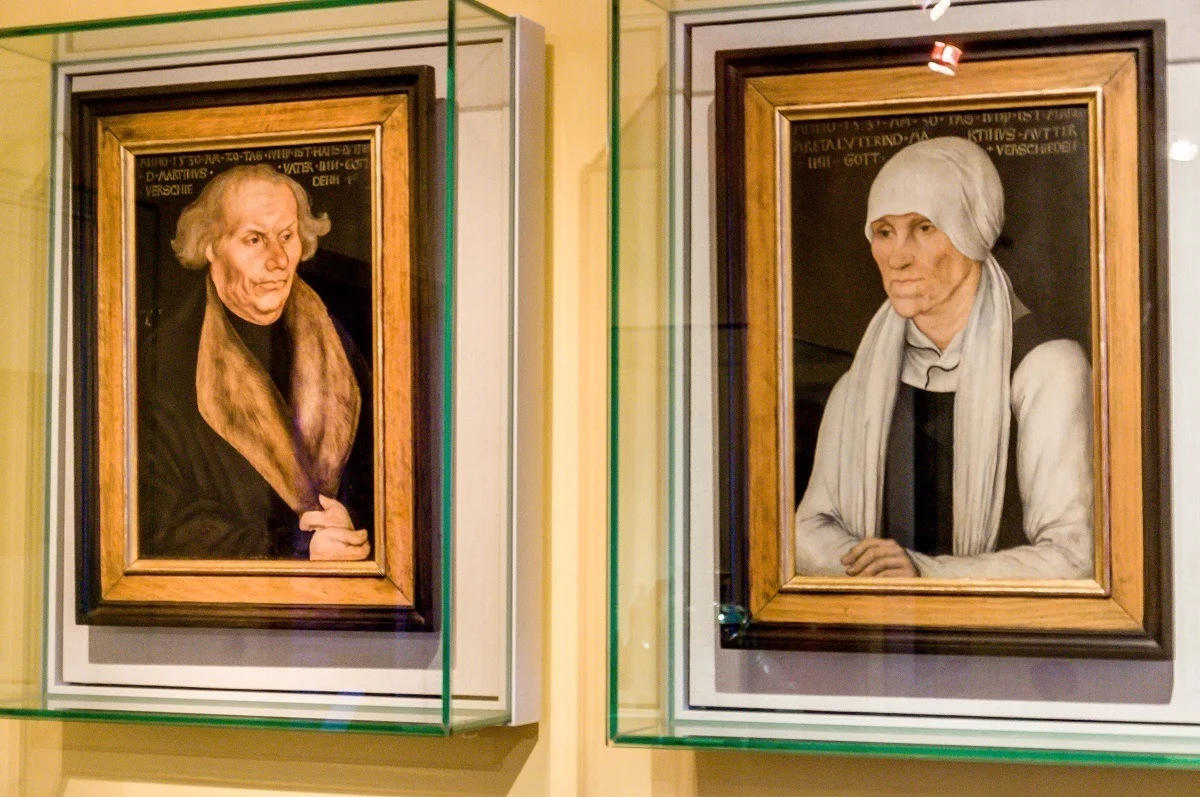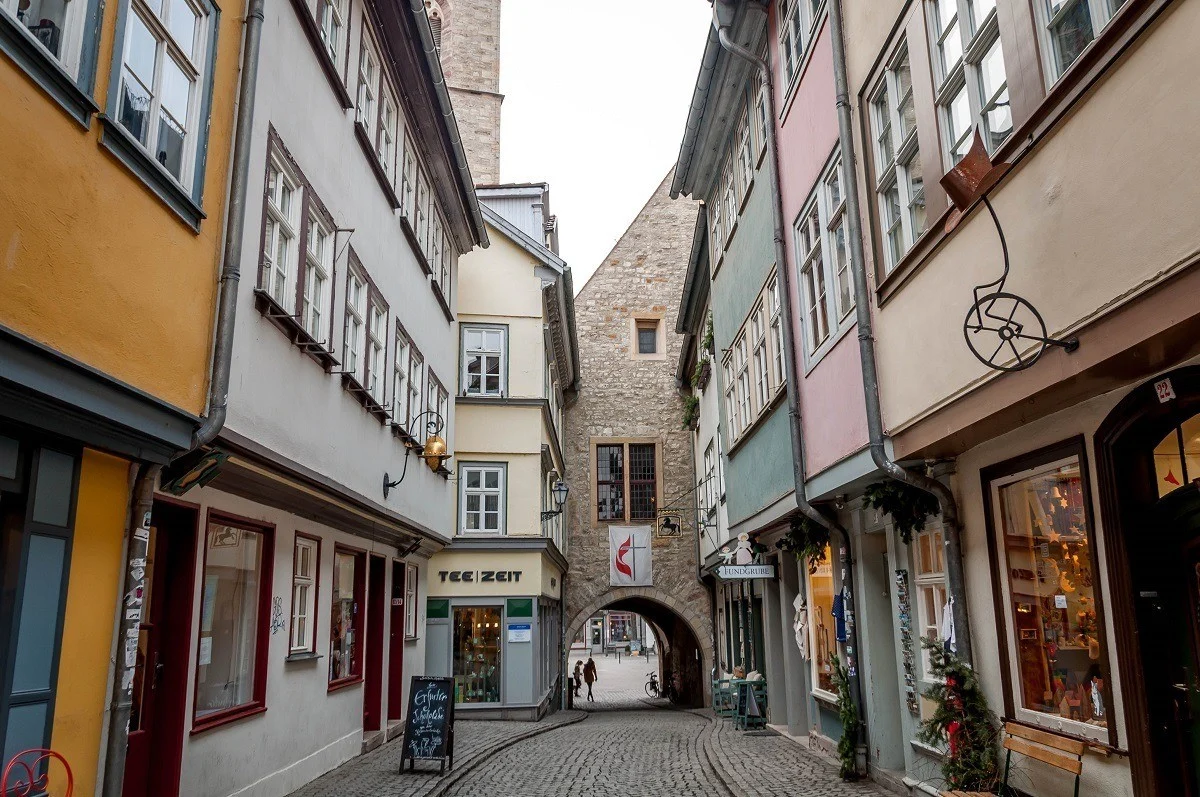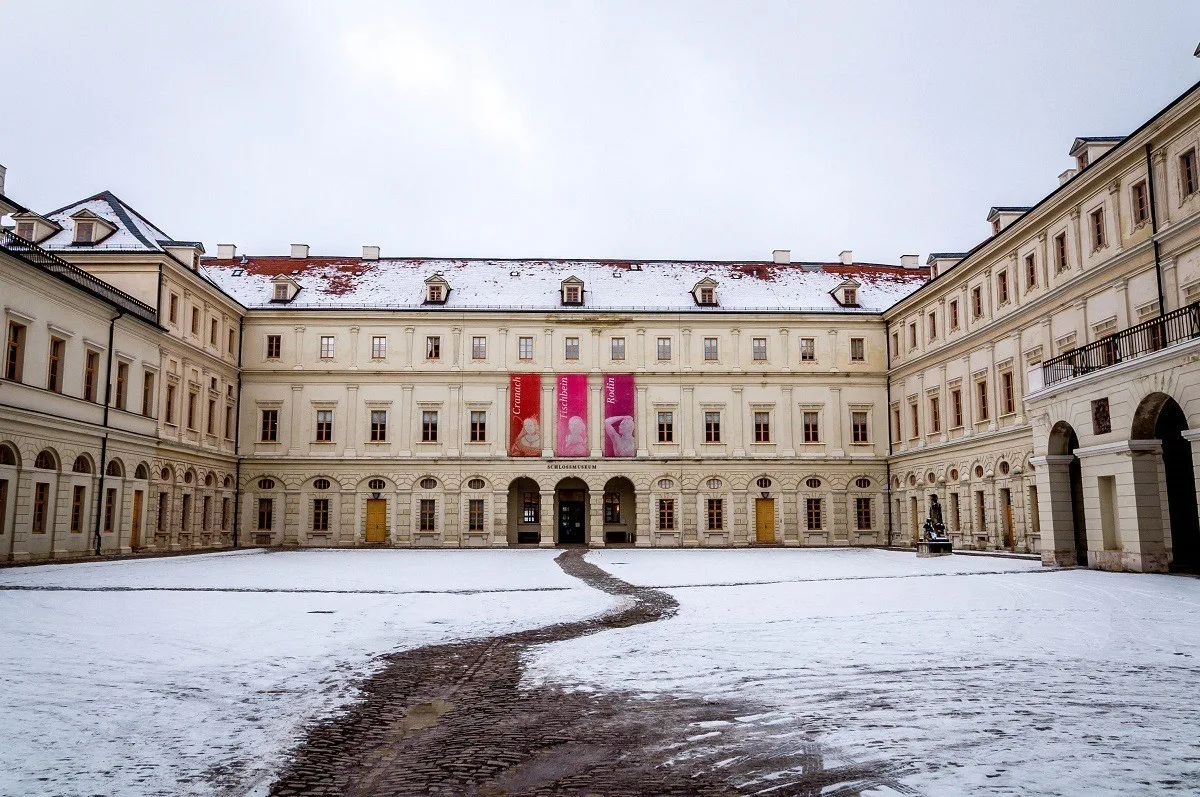In October 1517, a young theologian posted 95 theses on a church door in Germany. His name was Martin Luther and his hammer rang the bell of reform throughout the Christian world. Luther’s theses were the birth of the Protestant Reformation. Today, the Martin Luther pilgrimage sites in Germany draw visitors from around the world – including me.
“If you want to change the world, pick up your pen and write.”
My interest in Martin Luther and the German Reformation sites is historical, not religious. The purpose of my visit to Luther Country (as the locals call it) was to walk in the footsteps of Martin Luther. I am not Christian and have no theological calling to his ideas, however, over the years, I’ve been interested in the man, and the historical fallout of his actions. He was a rebel with a cause.
“You are not only responsible for what you say, but also for what you do not say”
As a man, he was complex. He was not an entirely likable person. He was stubborn. He stood up to gross corruption within the religious establishment, yet supported political corruption. He was convinced of his own righteousness. He was cunning. He was a shrewd political operative. He loved booze. And he was a man who altered the course of history – for both better and worse. Even today, we still struggle with the legacy of Luther.
“He who loves not wine, women and song remains a fool his whole life long.”
Martin Luther Country spans the German states of Thuringia and Saxony-Anhalt. Before reunification, this was East Germany. If you were to go any further east, you’d be in the Czech Republic. He moved repeatedly throughout the region (more on that later). I’ve been traveling frequently to Germany since 1995 and have never found a more beautiful corner of the country than Luther Country.
Every story has a beginning. And the story of the Reformation began with his birth on November 10, 1483 in Eisleben, Saxony. Luther’s parents were traditionalists, but were well off. Luther’s father operated copper mines and Luther’s mother cared for the family. He was the eldest son and his father had high expectations that he was to become a lawyer.
At the age of 14, he was sent to boarding school in the town of Magdeburg, about 50 miles away from home. A year later, he moved away to finish his primary schooling at St. George’s in the town of Eisenach, in the state of Thuringia.
He actually lived in Eisenach five different times in his life and deeply loved the city. This is where I picked up the trail and started walking in the footsteps of Martin Luther.
“Everything that is done in this world is done by hope.”
Luther’s boyhood home is just steps off the main market square in Eisenach. Unfortunately, during my visit, it was under construction. Almost all of the Luther sites have been undergoing some degree of renovation in anticipation of the 500th anniversary of the Reformation. I had to use my imagination to envision what his childhood room looked like.
However, St. George’s church on the main square was available. In this church, he would preach and also participated in the choir.
After graduating primary school, he moved to the nearby cosmopolitan city of Erfurt to study at the University of Erfurt. His family’s relative wealth afforded him a room in very nice student home close to the university. I wandered the small lanes of Erfurt’s old city and could almost hear Luther’s footsteps on the Merchants’ Bridge as he would stop to pick up clothes – dyed in blue (as many of the city’s residents would wear).
Years later, as a monk, he would corner merchants on the narrow staircase leading down to the Gera River and ask for donations (the staircase is known today as the Lutherstiege). But it was also here in Erfurt, with its sad Jewish history, that Luther’s opinions of Judaism were formed (more on that later).
He graduated from University of Erfurt and immediately re-enrolled in the school’s law program. And, he may have been forgotten to history as a bureaucratic lawyer, if it were not for a surprise summer storm in 1505. Luther had only recently begun his law degree.
But on July 2, 1505, he was returning to Erfurt from visiting his family and was caught in violent thunderstorm that terrified him. A lightning bolt crashed near him and he called out to God, “Help! Santa Anna, I will become a monk!” He survived the storm, but believed he had made a binding contract directly with God.
Much to his father’s chagrin, he dropped out of law school, walked through a gate with a large black door and entered the local Augustinian Monastery.
“It is neither right nor safe to go against my conscience.”
St. Augustine’s Monastery in Erfurt still exists today. I was able to walk through the gate, just as Luther had done. I entered St. Augustine’s church and was able to see where Luther prayed every day. He would look up at the stained glass window, containing a white rose on a blue field with a red heart center and adorned with a black cross over the heart.
Years later, Luther would think back and select this white rose as his symbol: the Lutheran Rose. Visitors coming to Erfurt can take accommodations at the monastery and sleep in a room like Luther did (although much more modern…and comfortable).
“My heart, which is so full to overflowing, has often been solaced and refreshed by music when sick and weary.”
Two years later, in 1507, Luther was ordained a priest in the grand St. Mary’s Cathedral overlooking the main square in Erfurt. Of all the cathedrals in Germany, this is one of the finest. And the Domplatz square in Erfurt is my absolute favorite. The next year he received a degree in biblical studies.
Four years later, he received his Doctorate in Theology and began teaching at the University of Wittenberg. For the rest of Luther’s life, the cities of Erfurt and Wittenberg would act like poles in his life: Erfurt would be his spiritual home and Wittenberg would be his professional home.
“Many pass for saints on earth whose souls are in hell.”
Yet all was not well in the Catholic Church. The Pope had a scheme to sell indulgences in order to pay for the rebuilding of St. Peter’s Basilica in Rome. This action was representative of the overall corruption in the Catholic Church and it absolutely incensed Luther.
On October 31, 1517, Martin Luther wrote his “Disputation of Martin Luther on the Power and Efficacy of Indulgences,” which he nailed to the church door in Wittenberg. He intended to spark a theological debate. Instead, he started a revolution.
“Even if I knew that tomorrow the world would go to pieces, I would still plant my apple tree.”
Luther’s ideas spread like wildfire, aided mass productions of his theses by a printing press and translations into other languages. By 1520, it was clear to the Catholic Church that the problem known as Martin Luther wasn’t going away. Luther was order by the Pope to recant. He refused. Pope Leo X excommunicated Martin Luther on January 3, 1521. Yet the Pope really had no power.
The second ax fell a few months later. Having already lost his religious support, Luther lost his secular support. At the Diet of Worms in 1521, the Holy Roman Emperor Charles V tried and convicted Luther and issuing a warrant for his arrest. He had secured safe passage to attend the trial, but was a marked man. On his way back to Wittenburg, he disappeared.
His friends had arranged for Luther to be kidnapped and taken to Wartburg Castle overlooking his beloved town of Eisenach. Luther arrived on May 4, 1521 and spent the next 10 months in hiding as a monk under the assumed name of Junker Jörg.
During his time, he translated the New Testament of the Bible from Greek into German (one of his original Bibles is on display at the Duchess Anna Amalia Library in Weimar). Unlike current Catholic Church teachings, Luther believed that individuals could have a direct relationship with God and did not need the clergy to act as intermediaries. Having access to the bible proved critical to the success of spreading Lutheranism.
“There never yet have been, nor are there now, too many good books.”
In June 1525, he was married to Katharina von Bora, a nun who was 15 years his junior. Luther had never understood the Catholic Church position on celibacy. He felt having a wife and partner made him stronger. The wedding was attended by Luther’s friend and long-time collaborator, Lucas Cranach the Elder.
Cranach was Luther’s confidant and a painter who ensured we knew exactly how Luther looked at every stage of his life. Nearly every Martin Luther site in Germany has Cranach paintings, but I found a large collection of them in the Cranach Gallery at the Weimar Palace.
Luther was a marked man for the rest of his life, however, that was largely a political designation. He lived remarkably in the open under the protection of Protestant rulers in Germany, including Philip I, Landgrave of Hesse. He had counseled Philip I into entering a bigamous marriage, but gravely miscalculated the political risks of such an action. It became the blight on Luther’s legacy.
“Beer is made by men, wine by God.”
I ended my Martin Luther Germany Tour in the very north of Bavaria. Martin Luther briefly lived in the mountaintop castle Veste Coburg in 1530. It was an excellent choice for Luther – there is no finer castle in all of Germany.
“Every man must do two things alone; he must do his own believing and his own dying.”
After nearly two weeks of crisscrossing Germany on my own Martin Luther pilgrimage, I felt like I had a much better handle on the man. However, the more I learned of Luther, the more I wanted to know.
Opening the box on his life also introduces a nagging question: Was he a good man?
Luther’s legacy has been complicated. There are billions of Protestants in the world who owe their faith to him. Yet the rift that he created has led to countless wars and troubles.
Most difficult of all, as the Nazis came to power, they relied heavily on the writings of Martin Luther to justify their positions. And it was easy to do, Luther wrote a 60,000 word book on the topic: On the Jews and Their Lies.
Nuremberg was the first major city to embrace Lutheranism and it was also the intellectual seat of Nazi power. Many historians have argued that Luther’s ideas and writings were the blueprint for Nazism. Even if this overstates his role, he certainly helped pave the way.
Over 500 years after the Reformation, I’m glad I took the time to tour the Martin Luther Germany sites and learn more about this complex man and his ideas. Walking in the footsteps of Martin Luther is an experience I will never forget.
Sites on the Martin Luther Germany Tour
Martin Luther Sites in Eisenach
Luther’s House – Located at Lutherplatz 8. The house is open from April-October daily from 10:00am-5:00pm; and November-March from 10:00am-5:00pm, except Mondays. Website: https://www.lutherhaus-eisenach.com/en/
St. George’s Church – Located right on the market square. He sang and preached in this church. Website: https://www.kirchenkreis-eisenach-gerstungen.de/
Wartburg Castle – Located on the hill above town. The castle is open from April-October daily from 8:30am-5:00pm; and November-March daily from 9:00am-3:30pm. Website: https://www.wartburg.de/en/
Martin Luther Sites in Erfurt
Augustinian Monastery – Located at Augustinerstrasse 10. Visits are possible on a one hour which is run several times daily. Check the website for specific times, but generally at 9:30am, 11:00am, 12:30pm, 2:00pm and 2:30pm, plus other times during peak season. Website: https://www.augustinerkloster.de/
St. Mary’s Cathedral – Located on the massive Domplatz square in the Old Town. The Cathedral is open from May-October on Monday-Saturday from 9:30am-6:00pm, and 1:00pm-6:00pm on Sunday; from November-April on Monday-Saturday from 9:30am-6:00pm, and 1:00pm-5:00pm on Sunday. Website: www.dom-erfurt.de
Collegium Maius, the old Erfurt University Building – Located on Michaelisstrasse. This building is a post-war reconstruction. The exterior is visible, but the building itself now houses an evangelical church.
The Georgenburse, or Student Dormitory – Located at Augustinerstraße 10. Tours are available on request.
Luther Memorial Statue – Located in Anger Square in front of Merchants’ Church St Gregorius at Anger 80. Always accessible.
Merchants’ Bridge and the “Lutherstiege” (or Luther’s Stairs) – Crossing the Gera River in the center of town. Always accessible.
Martin Luther Sites in Weimar
The Church of St. Peter and St. Paul – Located on the Herderplatz in Weimar. Open from April-October on Monday-Friday from 10:00am-6:00pm; Saturday from 10:00am-noon and again 2:00pm-4:00pm; Sunday from 11:00am-noon and again from 2:00pm-4:00pm. From November-March, open daily from 11:00am-noon and again from 2:00pm-4:00pm. Website: https://www.ek-weimar.de/
The Palace Museum – Open April-October 15 on Tuesday-Sunday from 10:00am-6:00pm; and October 16-March on Tuesday-Sunday from 10:00am-4:00pm. Website: https://www.klassik-stiftung.de/
Duchess Anna Amalia Library – Located at Platz der Demokratie 1. A maximum of 290 people can visit per day. Get tickets well in advance at the Tourist Information office in Weimar on the main Market Square.
Martin Luther Sites in Coburg
The Coburg Fortress – Towering above the village of Coburg, the Coburg Fortress (Veste Coburg) is open April-October daily from 9:30am-5:00pm; from November-March on Tuesday-Sunday from 1:00pm-4:00pm. Website: https://www.kunstsammlungen-coburg.de/en/home/
While in Germany, I was the guest of the German National Tourist Board. I’m grateful to the GNTB as well as Thuringia Tourism, Weimar Tourism, the Erfurt Tourism & Marketing Board, and the Eisenach Wartburg Region. As always, all opinions are my own.
A few more photos from my Martin Luther Tour of Germany:
Lance Longwell is a travel writer and photographer who has published Travel Addicts since 2008, making it one of the oldest travel blogs. He is a life-long traveler, having visited all 50 of the United States by the time he graduated high school. Lance has continued his adventures by visiting 70 countries on 5 continents – all in search of the world’s perfect sausage. He’s a passionate foodie and enjoys hot springs and cultural oddities. When he’s not traveling (or writing about travel), you’ll find him photographing his hometown of Philadelphia.






















Lynn Schmidt
Thursday 14th of September 2023
Is there a tour in October that I might join? I am a solo traveler.
Lance Longwell
Friday 15th of September 2023
I didn't do a tour. I explored on my own as a solo traveler. It's possible to do it alone.